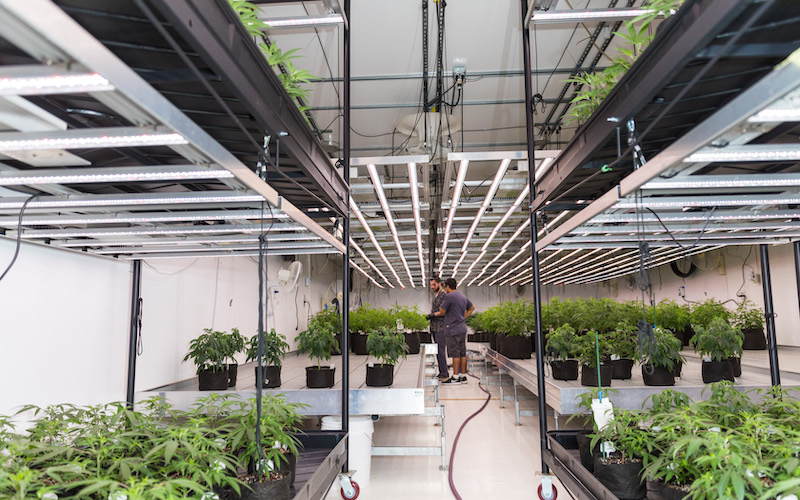Nic Borst became interested in the cannabis industry after he broke his back during a kayaking competition. To avoid physically debilitating surgery and the pain and anxiety associated with recovery, he turned to cannabis. The medicinal value he saw in the plant sparked a passion that led him to start his own cultivation facility. Using his background as an organic farmer, he founded this new family business shortly after cannabis became legal in Colorado.
With cold, dry winters, spring hail, and summer heat, Colorado presented a challenging growing environment. Borst wanted to produce great product all year long, no matter the season. Once he started researching environmental systems, he found that most on the market were designed to work with traditional heating, ventilation, and air conditioning setups and didn’t offer the low ambient opportunities and other functionalities needed for successful cannabis cultivation.
Another issue he encountered when preparing his site was that traditional HVAC systems presented significant challenges with redundancy. He wanted a system that would allow him to continue operations regardless of the status of any single room or piece of equipment. The last major challenge he faced was budget. His facility was a small, family-owned business, and he wanted to work with one environmental systems company that could provide the necessary engineering, infrastructure, plans, and equipment, so he wouldn’t have to deal with multiple vendors.
In 2015, while still searching for a company that could help him create the controlled, consistent, and redundant growing environment he envisioned, Borst met Surna’s co-founder, Brandy Keen, at a conference in Denver. Surna had the technologies to provide everything he was looking for.
After his initial meeting with Keen, Borst worked with Surna on plans for his facility’s cultivation capacity. They designed a chilled water system for his facility, performing all the load calculations and equipment selections, and walked him through how to use the equipment.
Surna laid out a full strategy for Durango Cannabis Company based on the projections for cultivation space in the building, number of plants, water schedule, and lighting type, quantity, and schedule. Their plan included working with Borst’s general contractors, completing the engineering, and commissioning the new system.
Borst notes that the best thing about this system is that it’s multidimensional. For example, Durango is able to reclaim water from the dehumidification process, lowering the company’s water bill. “It gives us controllability,” he adds, “and it gives us redundancy, so that if one component needs service, all the other rooms continue. It gives us the ability to heat or cool our environment no matter what the temperature or climate is outside of the building.”
Durango’s founder is sold on the new tech. “I think you’ll get a lot of different HVAC systems out there that will give you good options in one area or in one dimension, but this system really gives you the best solutions for all the different areas you’re looking for.”
Image Courtesy High Mountain Health in Flagstaff, AZ






